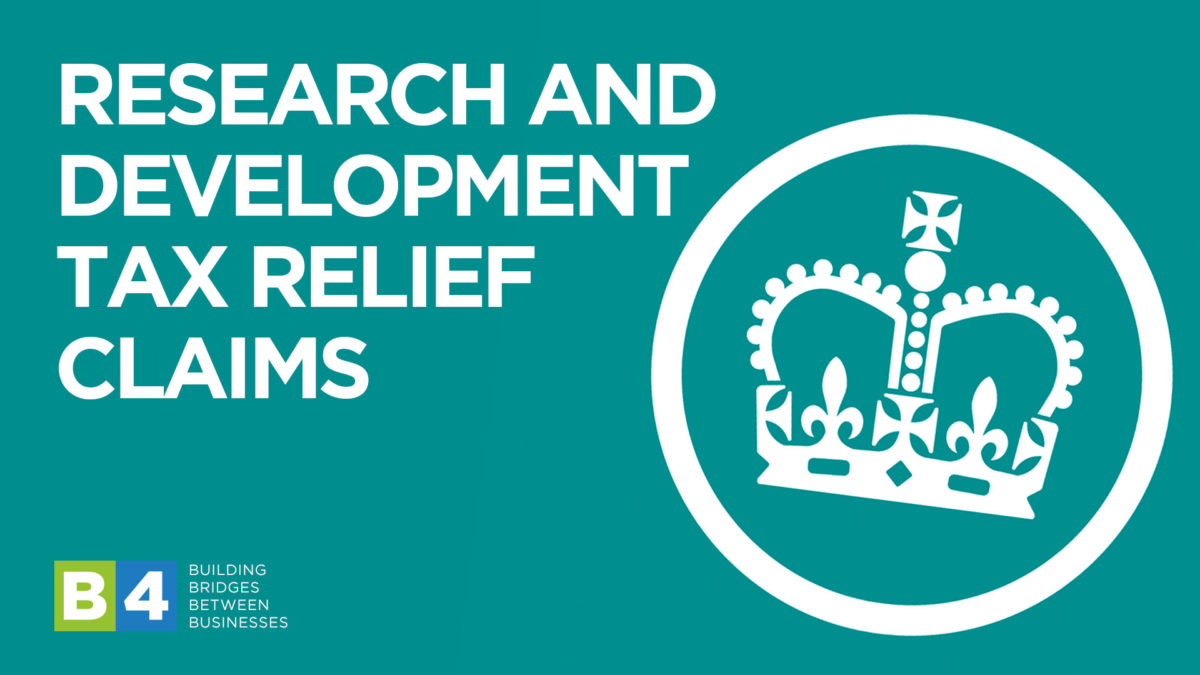
Research and Development Tax Relief Claims
Jonathan Walton and Owen Kyffin of B4 members Whitley Stimpson were joined by their client Nigel Nerurkar of fused4 to focus on research and development.
Nigel, as Chief Hiring Innovator at fused4, had a successful R&D experience with the expert advice of Whitley Stimpson and explains more about the process, the advice he received and why it was so important to fused4 as a start up to receive much needed funds back into the business.
Owen opens the show with a look at the actual benefits of an R&D claim and provides an overview of the two types of R&D claim:
1. SME R&D Relief
A relief that is available to small and medium sized enterprises, which is known as the SME R&D relief. You can claim the SME R&D relief if you have less than 500 staff and a turnover of under 100 million euros, or a balance sheet total under 86 million euros.



Effectively you can deduct a maximum of 130% of your qualifying costs from your yearly profits. This will be a 100% productive deduction, plus 130% making 230% In total. The main qualifying expenditure which most organisations qualify for is their staffing costs on qualifying staff engaged in r&d. To the extent that this additional relief creates a loss, you can claim back a tax credit. By surrendering the loss of 14.5% of the ‘surrenderable’ loss. If you’re innovating with a new product, this can be very helpful to your cash flow.
2. Large company Relief
Large companies can claim the research and development expenditure credit or ‘RDEC’ for their qualifying expenditure on R&D projects. The definition of r&d for both of these is the same, but for the large companies they get a credit of (currently) 13% in their accounts (as above the line credit) but that is taxable so the 13% relief comes down to 11.5%.
Recent changes from April: there is a PAYE and Nic cap for the small and medium sized repayable tax credit which is designed to prevent perceived possible abuse. This limits the claim to be set at £20,000 pounds plus 300% of the company’s total PAYE and NIC liabilities for the period.
Owen closed by stating that “In last week’s budget it was announced that the government would be launching a consultative project to assess whether the R&D system as it stands, is still fit for purpose. The Government and Chancellor are placing, obviously, huge emphasis on recovering the economy and clearly want to encourage innovation, new products and cutting edge technology and science. It’s an open book. They want to see if the system can be improved, looking at the definitions of R&D and considering whether it’s right to have two separate or one amalgamated scheme. It’s looking at the rates and establishing if they’re still competitive – it’s possible they might be more generous, especially considering as we’re partly outside of the EU imposed restrictions on state registered aid which previously limited the amount of relief which could be given.”
To see or hear the full discussion, please click the links below.
More in Accountants

Why having an audit can boost your business
Many directors will wince at the prospect of an audit, seeing it as a necessary evil to meet statutory obligations.

FRC Proposes Major Overhaul of Auditing Standards
In a bold move, the Financial Reporting Council (FRC) has unveiled proposed changes to auditing standards that could have a major impact on the financial world, according to chartered accountants and business advisors Whitley Stimpson.

Whitley Stimpson shines as finalist for top national award
Service Charge Accountancy specialist Jonathan Walton of Whitley Stimpson has been recognised for his outstanding work in the field by being shortlisted for a prestigious property industry award.
From this author

B4 Reviews – with Ruth Hawkins
Richard has recently asked me to find and lead a small team of reviewers from the B4 community, so over the next few weeks I will be looking to build that team and also looking for venues, events and activities from within the B4 network and beyond to write some reviews!

Get Support Announced as B4’s Official IT Partner
We are delighted to announce that Oxfordshire’s leading IT Services provider, Get Support, have become B4’s Official IT Partner.

Reliable Vehicle Servicing and Repairs with Pete Thirtle
When it comes to maintaining and repairing your vehicle, trust and expertise are paramount. That’s why Pete Thirtle Vehicle Services stands out as one of the go-to independent garage for drivers in Bicester, Oxford, and the surrounding areas. With a reputation built on honesty, reliability, and top-tier service, Pete can ensure that your vehicle receives the best care possible. B4’s CEO, Richard Rosser, shines the spotlight on the ultra-reliable, Pete Thirtle.

